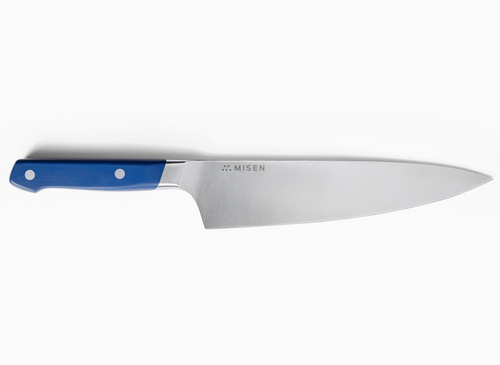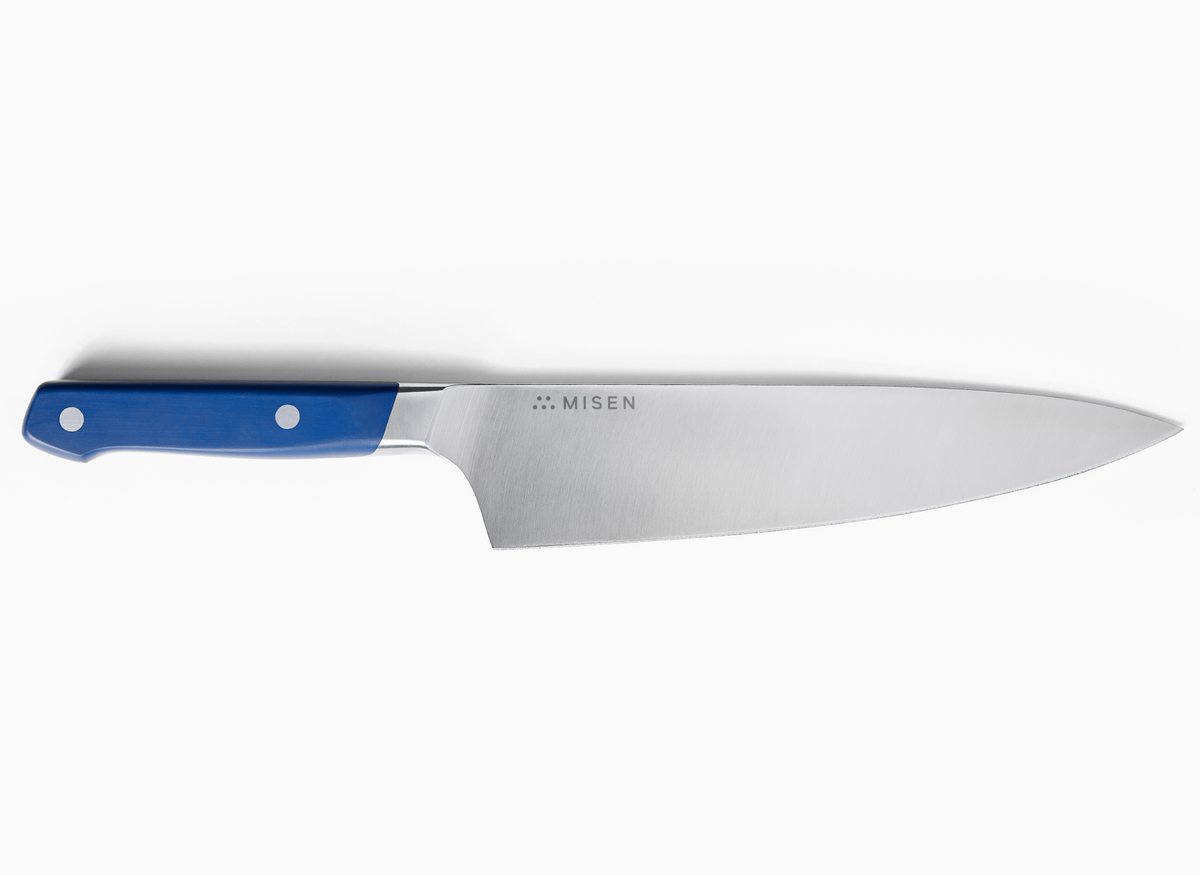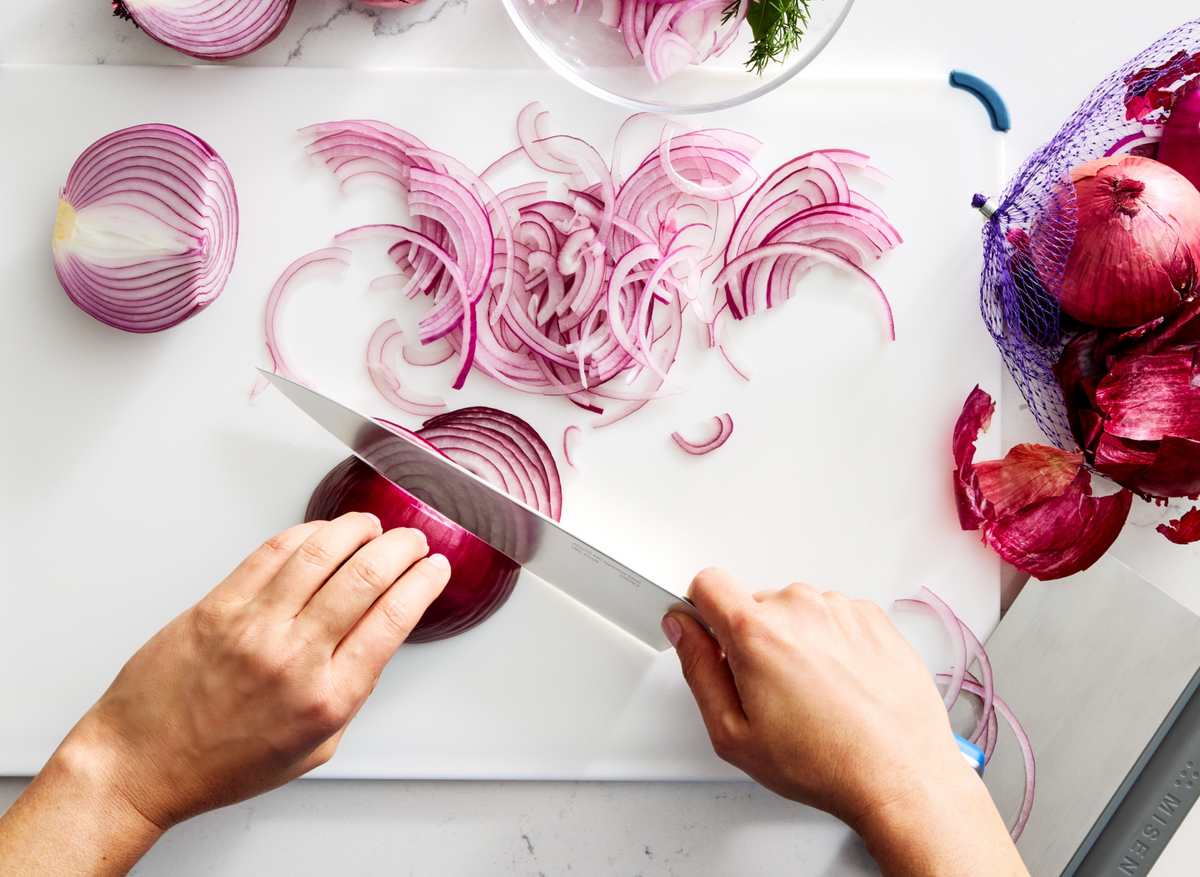The Best Bread Knife for Your Kitchen

Bread knives are essential tools for any kitchen, featuring unique serrated edges designed to slice through crusty loaves without crushing soft interiors. This guide explores the key characteristics of bread knives, their importance in bread cutting, and what to look for when choosing a quality bread knife for your kitchen.
Understanding Bread Knives
Defining characteristics of bread knives
Bread knives stand out from other kitchen blades with their distinctive features. The most notable characteristic is the long, serrated edge, typically spanning 8 to 10 inches. This sawtooth design allows the knife to grip and slice through crusty exteriors while preserving the soft interior of bread.
The serrations on bread knives are usually wider and more pronounced than those found on other serrated knives, enabling them to tackle even the toughest artisanal loaves. Another key feature is the relatively thin and flexible blade, which facilitates smooth, even cuts and reduces the risk of tearing or crushing delicate bread structures.
For safety and precision, the tip of a bread knife is often rounded or blunt. Many bread knives also feature an offset handle design, providing knuckle clearance and allowing for a more comfortable grip when slicing through large loaves. These unique attributes make bread knives indispensable tools for both home cooks and professional bakers, ensuring precise and effortless bread cutting.[1]
Importance of serration in bread cutting
The serrated edge of a bread knife plays a crucial role in achieving perfect slices. Unlike straight-edged blades, serrations create a saw-like action that grips and cuts through the tough outer crust of bread without applying excessive pressure. This unique design allows the knife to penetrate the crust while preserving the soft, delicate interior structure of the loaf.
The teeth of the serrated edge catch onto the bread's exterior, enabling a smooth back-and-forth motion that results in clean, even slices. This sawing action is particularly effective for crusty artisanal breads, baguettes, and other types of bread with a firm exterior.
The importance of serration extends beyond just cutting efficiency; it also enhances the overall bread-eating experience by maintaining the integrity of the loaf's texture and appearance. By preventing crushing and tearing, serrated knives ensure that each slice retains its intended shape and airiness, which is essential for both presentation and taste.[2]
Key features to look for in a quality bread knife
When selecting a quality bread knife, several key features should be considered. Blade length is crucial, with optimal lengths ranging from 9 to 10.5 inches, providing ample coverage for wide loaves. The serration pattern significantly impacts performance; moderately shallow serrations with slightly rounded points tend to be most effective, allowing for clean cuts through both crusty exteriors and soft interiors.
Blade flexibility plays a role in maneuverability, with slightly flexible blades excelling at tasks like peeling butternut squash. The knife's weight and balance are essential for comfort and control, with a moderate heft providing stability without causing fatigue.
High-quality materials, such as high-carbon stainless steel, contribute to edge retention and overall durability. Ergonomic handles with full tang construction enhance grip and stability. Some knives feature offset handles or curved blades, which can improve leverage and prevent knuckle contact with the cutting board.
By considering these features, you can select a bread knife that excels in slicing various types of bread and other foods, ensuring long-lasting performance in your kitchen.[3]
Evaluating Bread Knife Performance
Cutting ability on various bread types
Bread knives excel at cutting through various types of bread, from crusty artisanal loaves to soft sandwich bread. For rustic, hard-crusted boules, a knife with moderately shallow serrations and slightly rounded points effortlessly slices through the tough exterior without tearing the soft interior.
When tackling baguettes, a longer blade of at least 9 inches ensures smooth, even cuts without squashing the delicate crumb structure. Soft sandwich breads require a gentler touch, and knives with wavy, scalloped edges glide through without compressing the tender loaf.
Beyond bread, these versatile knives shine when slicing ripe tomatoes, with their serrated edges easily piercing the skin without crushing the flesh. Some models feature unique serration patterns that combine pointed teeth and rounded waves, making them adept at handling both crusty breads and delicate produce.
The cutting ability of bread knives extends to other kitchen tasks as well, such as peeling thick-skinned vegetables like butternut squash or slicing through large, juicy watermelons, showcasing their versatility beyond just bread cutting.[4]
Comfort and ergonomics during use
The comfort and ergonomics of a bread knife significantly impact its usability and effectiveness. A well-designed handle is crucial for reducing fatigue during extended use. The knife's balance also plays a vital role in user comfort. A well-balanced knife feels like a natural extension of the user's arm, enhancing control and precision.
The blade's height influences both dexterity and stability. Narrower blades, around an inch tall, tend to be lighter and more maneuverable, while taller blades provide increased stability for consistent slicing. The shape of the blade, whether straight or curved, affects leverage and knuckle clearance. Curved blades offer better leverage for long slices and keep hands off the cutting board, but may require more attention to ensure complete cuts.
Some models feature a double-serrated edge design that enhances cutting performance while maintaining comfort. Ultimately, the ideal bread knife should feel balanced and have a handle that comfortably fits the user's hand, ensuring optimal performance and reducing the risk of fatigue or injury during use.[5]
Durability and edge retention
Durability and edge retention are crucial factors in determining the quality of a bread knife. The hardness of the steel, measured on the Rockwell C scale (HRC), plays a significant role in edge retention. Higher HRC values generally correlate with better edge retention, but at the cost of reduced durability.
For instance, knives with an HRC of 60-61 can maintain their sharpness for 5-6 months of regular home use, while those with an HRC of 63 may last 8-9 months before requiring maintenance. However, the relationship between hardness and edge retention is not always linear. Factors such as carbide content and distribution also influence a knife's ability to hold an edge.
Vanadium-rich steels exhibit superior edge retention due to their hard vanadium carbides. These steels strike an optimal balance between toughness and wear resistance, making them ideal for high-performance bread knives. Stainless steels like AEB-L, 14C28N, and LC200N offer a good compromise between edge retention and corrosion resistance, making them suitable for kitchen environments where moisture exposure is common.
Heat treatment also affects edge retention, with cryogenic processing showing minimal impact on performance compared to traditional heat treatment methods.[6]
Specialized Bread Knives for Sourdough
Challenges of cutting artisanal sourdough
Cutting artisanal sourdough presents unique challenges due to its distinctive crust and crumb structure. The crust of a well-baked sourdough loaf can be exceptionally tough, requiring a high-quality serrated knife to slice through without crushing the delicate interior. The type of flour used, baking temperature, and proofing time all contribute to crust texture, with bread flour loaves often developing harder crusts than those made with softer flours.
Proper fermentation is crucial for achieving an ideal crumb structure; under-proofed sourdough can result in a dense, gummy interior with sporadic large holes, making it difficult to cut evenly. Conversely, over-proofed dough may collapse during baking, leading to a flat loaf that's challenging to slice cleanly.
Achieving the right balance in fermentation produces a well-developed gluten network, resulting in an open, lacy crumb that's easier to cut without compressing. The hydration level of the dough also affects cutting; higher hydration loaves tend to have a more open crumb structure, which can be trickier to slice without tearing.
Mastering the art of cutting artisanal sourdough requires not only the right tools but also an understanding of the bread's internal structure and how it's affected by various baking parameters.[7]
Recommended knives for sourdough enthusiasts
For sourdough enthusiasts, a high-quality bread knife is essential for tackling the unique challenges presented by artisanal loaves. Look for knives with longer blades, typically 9 to 10.5 inches, to handle wider boules and batards. A slightly curved design can aid in navigating crusty bases, while a comfortable handle with textured finger points ensures a secure grip.
When it comes to serration patterns, a combination of pointed teeth and rounded waves can be particularly effective for sourdough. This design allows the knife to grip the tough crust while still gliding smoothly through the soft interior.
For those seeking versatility, our Santoku Knife offers exceptional performance not only for bread but also for a wide range of kitchen tasks. Its sharp edge and balanced design make it a favorite among home cooks and professional chefs alike.
Ultimately, the best knife for sourdough will depend on your specific needs and preferences. Consider factors such as blade material, handle comfort, and overall balance when making your selection.[8]
Maintaining Your Bread Knife
Proper cleaning and storage techniques
To keep your bread knife in top condition, proper cleaning and storage are essential. After each use, wash your knife immediately with hot water and a small amount of dish soap, using a sponge or soft brush to gently clean the blade and handle. Avoid using a dishwasher, as the harsh detergents and high temperatures can damage the blade and handle.
Once cleaned, thoroughly dry the knife with a clean cloth to prevent rust formation, especially if your bread knife is made of high-carbon steel. For added protection, consider applying a thin layer of food-safe mineral oil or vegetable oil to the blade before storage.
When it comes to storage, opt for a wooden knife block, magnetic strip, or a dedicated knife sheath to protect the blade and ensure safety. Avoid storing your bread knife loosely in a drawer, as this can lead to damage from contact with other utensils and increase the risk of accidental cuts.[9]
Sharpening serrated blades
Sharpening serrated blades requires a unique approach due to their distinctive tooth-like edge. Unlike straight-edged knives, bread knives cannot be sharpened using conventional methods such as whetstones or electric sharpeners. Instead, a specialized technique is employed to maintain their cutting prowess.
One effective method involves using a thin rod, such as a wooden dowel or ceramic honing rod, wrapped in high-grit sandpaper. This makeshift tool is carefully nestled between each serration, and the knife is moved along the rod to grind away at the teeth until a burr forms on the opposite side. To enhance precision, experts recommend coloring the serrations with a black marker to identify the areas requiring attention.
After addressing each serration, the burr can be removed using a strop or finishing stone on the flat side of the blade. For regular maintenance, simply swiping a ceramic honing rod along the flat side of the knife can help preserve its sharpness.[10]
When to replace your bread knife
Recognizing when to replace your bread knife is crucial for maintaining optimal performance in the kitchen. While bread knives are generally durable, their serrated edges can dull over time, making slicing more challenging and potentially damaging delicate bread structures.
Signs that it's time for a replacement include increased difficulty in cutting through crusty loaves, tearing of soft breads, and the need for excessive pressure when slicing. Additionally, if you notice uneven or jagged cuts, especially on softer items like tomatoes, it may indicate that your knife's serrations have worn down.
Unlike straight-edged knives, serrated bread knives are challenging to sharpen at home, and professional sharpening can be costly and time-consuming. Given the relatively affordable price point of many quality bread knives, replacing the entire knife is often more practical than attempting to restore a dull edge.[11]
Conclusion
A high-quality bread knife is an indispensable tool in any kitchen, offering precision and ease when slicing through various types of bread and other foods. By understanding the key features and performance factors of bread knives, you can make an informed decision when selecting the perfect knife for your needs.
Remember to consider blade length, serration pattern, and overall ergonomics when choosing your bread knife. Proper care and maintenance will ensure your knife remains sharp and effective for years to come. Whether you're a sourdough enthusiast or simply enjoy a good slice of bread, investing in a quality bread knife will elevate your culinary experience.
Ready to upgrade your kitchen tools? Shop Now to explore our range of high-quality knives and cookware designed to enhance your cooking experience.
- Bread knives feature long, serrated edges designed to cut through crusty breads without crushing soft interiors.
- The serration pattern and blade length are crucial factors in a bread knife's performance.
- High-quality materials and ergonomic design contribute to a bread knife's durability and comfort during use.
- Specialized techniques are required for sharpening and maintaining serrated blades.
- Investing in a quality bread knife can significantly improve your bread-cutting experience and overall kitchen efficiency.
- What Knife is Used to Cut Bread? - Cooking Panda
- The Best Serrated Knife - The New York Times
- The Best Bread (Serrated) Knife - Serious Eats
- The Best Bread Knives - Food & Wine
- The Best Serrated Knife - Epicurious
- Testing the Edge Retention of 48 Knife Steels - Knife Steel Nerds
- Getting a Very Tough Crust - The Fresh Loaf
- The Best Bread Knife for Sourdough - The Perfect Loaf
- How to Clean and Store Your Kitchen Knives - Nakano Knives
- How to Maintain a Bread Knife for Best Shelf Life - Koi Knives
- The Best Bread (Serrated) Knife - Serious Eats








